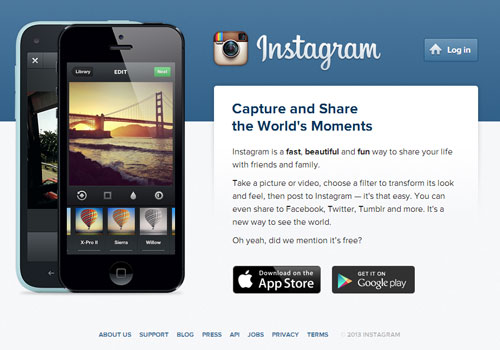Articles and News
Blow It Up: Winning Tactics for Jewelers to Survive and Thrive in The Age of Experience | March 20, 2019 (0 comments)

Munich, Germany—Experience and authenticity are two words jewelers keep hearing over and over, especially when it comes to selling to younger consumers. “Millennials spend their money on experiences.” “Millennials value authenticity.”
But these are not just buzzwords. Consumers today really are looking differently at how they shop and spend their money, and how you connect with them on an emotional level has more to do with whether they’ll shop with you than all the advertising in the world.
Jelena Gregov (left), a global experiential strategist based in Brooklyn and Munich, has worked on creating brand experiences for the New York Times, and is a contributor to Medium.com. Before an international audience of jewelers at the Inhorgenta show in Munich, she explained tactics to provide a compelling retail experience in today’s consumer marketplace.
“We keep hearing about how brick and mortar stores are dying, disappearing, or no longer relevant since digital media appeared. It’s true that digital changed the game for everyone, but it’s also true that brick and mortar is not going anywhere. If it were, Apple stores would not be as popular as they are and Apple would not hire a CEO from Burberry who is paid almost double the CEO of Apple.”
But brick and mortar is going through a transformation, said Gregov. The most crucial shifts is to understand that the way a product is discovered and talked about can be more important than the product itself. That’s a seismic shift from the past, where the product was dangled temptingly for the consumer who then wanted it enough to buy it.
In short, said Gregov, blow it up.
“Whatever you do should be interesting enough to create conversation around it. If nobody is going to say or feel anything around what you’ve done as brand or retailer, you might as well not do it. Indifference is non-existence.”
Brands used to rely on advertising to spread their message and convince people to buy. Today’s consumers, empowered by digital and social media, don’t want to be talked down to.
“What we have in place today are networks and niche communities, both online and offline. People gather around shared values, ideas they believe in, and aesthetics they care about. What is cool today is not defined by brands, it’s defined by the street. Your audience has a voice and your media today is every individual who has something to say about your product or your brand.”
This applies to all brands, not just big brands. What jewelers lack in scale they should compensate for by building highly personal relationships with their customers. The Internet has done for 21st century communication what television did for 20th century communication and print did for 19th century communication, but they all conveys ideas in tangible form.
Jewelers’ new important consumer is most likely to be female, says Gregov. Global spending by women reached nearly $40 trillion last year. They marry later, work more, have higher profile and higher paying jobs, are having fewer children and more than ever are financially independent. She is the one jewelers should be talking to—but they need to speak her language.
“You can’t just say diamonds are a girl’s best friend and expect it to resonate. You need to give her a reason to want to talk about you by giving her a brand experience worth talking about. She’ll Instagram the experience: not what she bought but how she bought it.”
Because the consumer has the power, retailers need to tap into the values they share with their customers. A store is no longer just a store; it’s a community center, a communications hub, an event space, and more. A retailer’s shared values must come across at every touchpoint, both online and offline, but in the offline world the service becomes the product. The physical product you sell becomes a byproduct of the relationship with the consumer and what they experience with you.
“It doesn’t help that the majority of legacy jewelry is product driven, when modern consumption is driven by lifestyle, not product or material things.” Still, she said, it’s not impossible, citing jewelry brands Aurate, Pamela Love, and Broken English as examples built around customer lifestyle that can quickly respond to the latest emerging trends.
Whatever it is, make it Instagrammable! Lesson two: “'Does something perform well on Instagram?' is a legitimate business decision," said Gregov. "This isn’t a generational issue, it’s a lifestyle issue. There’s a reason why visual retail is so important now. A modern consumer will share their experience so whatever you do has to be worthy of an Instagram post. I can’t stress enough about building communities through emotion. These are the most likely consumers to talk about your brand and product and likely to engage and buy again and again and again."
Related: How To Measure Your Instagram Success

The most important aspect to selling is to make the experience Instagrammable, says global experiential strategist Yelena Gregov.
Next is to figure out how to build personal relationships through consumer intelligence. Track data, both online and offline. Track the browsing behavior of people coming to your website, says Gregov. Where do they spend the most time on your site, what do they buy when? How do they behave when they’re in the store? What draws them and where do they linger? How do they communicate before and after they make a purchase? All that data can be used to build immersive experiences that mean something of value for your customers.
“Brands are not built by brand managers and products, and not sold by the sales manager. They’re built by fans. You just need to build upon what’s already out there. Do some research, analyze it, and do something with it, don’t just sit on the data. “Look at social networks, things you can use to your benefit and piggyback on what people doing and talking about and passionate about. Maybe it’s art. So make the store part gallery. Maybe it’s hiking, so take customers outside and connect with them. There’s no one solution for all.”
Don’t just use technology for technology’s sake, said Gregov. Use technology to enhance storytelling and create a meaningful experience for your brand.
“The truth is no matter how use technology, as a new way to sell product or to create a fantastic in-store experience, as long as it helps you make friends with customers, it doesn’t matter. If you do what you need to do and don’t copy someone else, success will come.”







